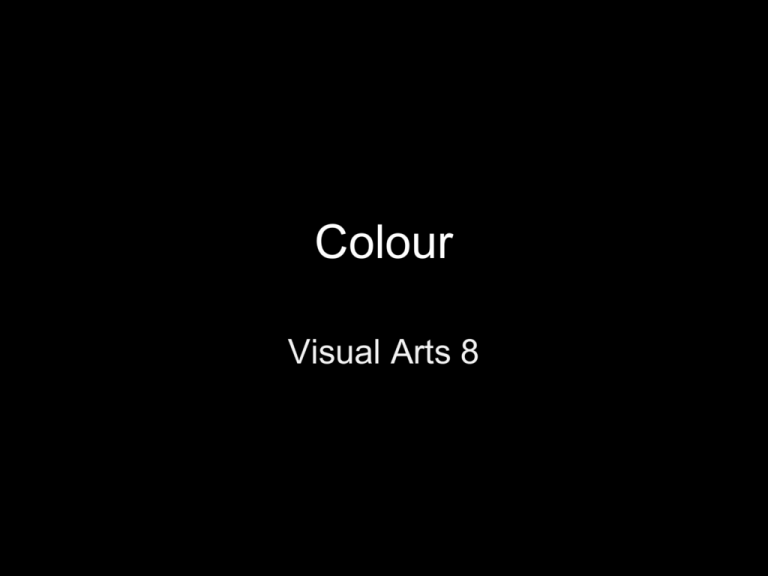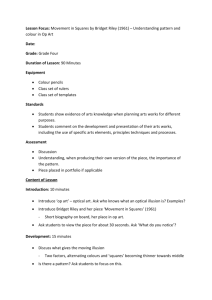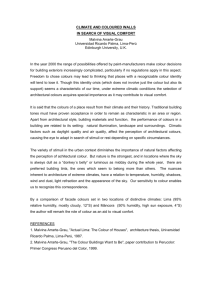Colour - Prairie Spirit Blogs
advertisement

Colour Visual Arts 8 Colour • There are many different terms used in reference to colour • The chroma refers to the description of the colour including the following descriptors • The hue describes the actual colour • Saturation describes the amount of hue that is present • The tint or shade describes how much white or black are mixed with the colour • The value describes the lightness or darkness of a colour Saturation • Refers to the intensity of a specific hue Hue • There are three primary colours • These colours cannot be made by mixing any other colours • The primary colours are red, yellow, and blue Secondary Colours • There are 3 secondary colours • Secondary colours are made by mixing equal parts of two primary colours • The secondary colours are green, orange, and purple + = + = + = Tertiary Colours • Made by mixing a primary and secondary colour + = + = + = + = + = + = Tints & Shades • Tints are made by adding white • Shades are made by adding black Tints Shades The Colour Wheel • The colour wheel shows how the colours work together Colour Schemes • There are many ways to combine colours based on the affect you are trying to achieve. Complimentary Colours • Complimentary colours are colours which are opposite each other on the colour wheel & & & Analagous Colours • These are colours that are beside each other on the colour wheel Monochromatic Colours • The monochromatic color scheme uses variations in lightness and saturation of a single color. Accented Neutral • This combines a neutral colour with a strong accent colour. Triadic Colour • The triadic color scheme uses three colors equally spaced around the color wheel. Double Complimentary • The tetradic (double complementary) scheme is the richest of all the schemes because it uses four colors arranged into two complementary color pairs. Cool Colours • These colours make the viewer think of cool temperatures. They include blues, greens, and purples. Warm Colours • These colours make the viewer think of warmth. They include reds, yellows, and oranges. Neutral Colours • These colours combine well with a variety of colours • Grey is considered a cool neutral • Browns and creams are warm neutral colours • In some cases white and black may also be considered neutrals Neutral Colour Gradients







